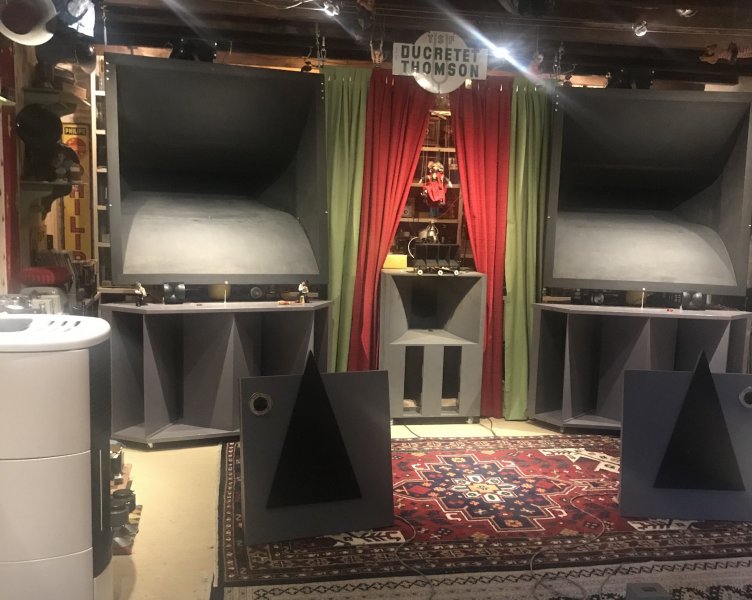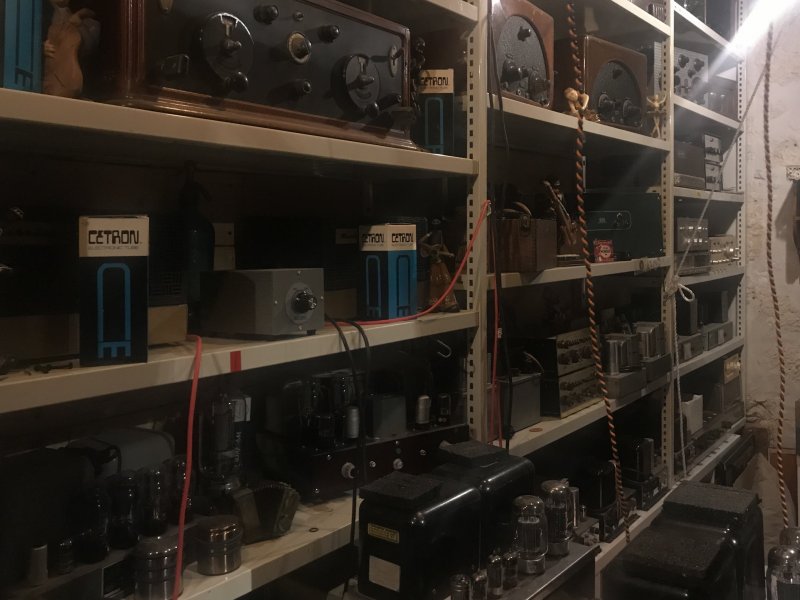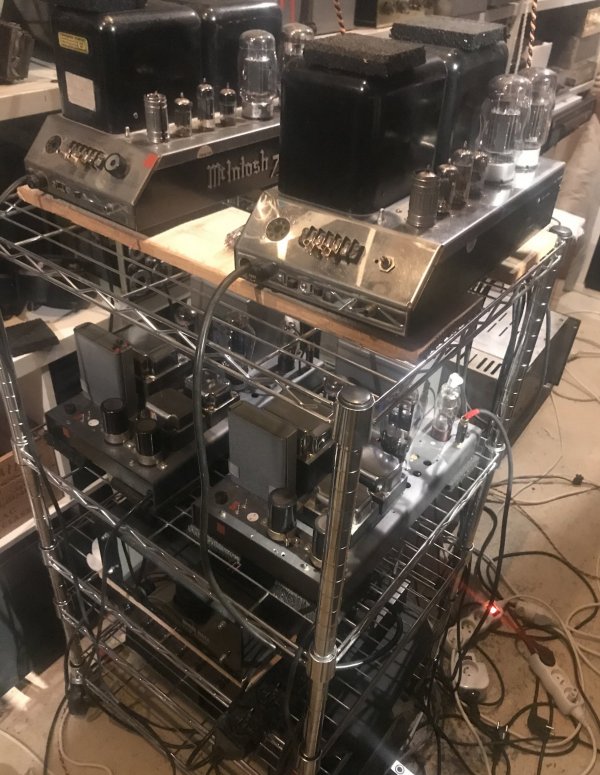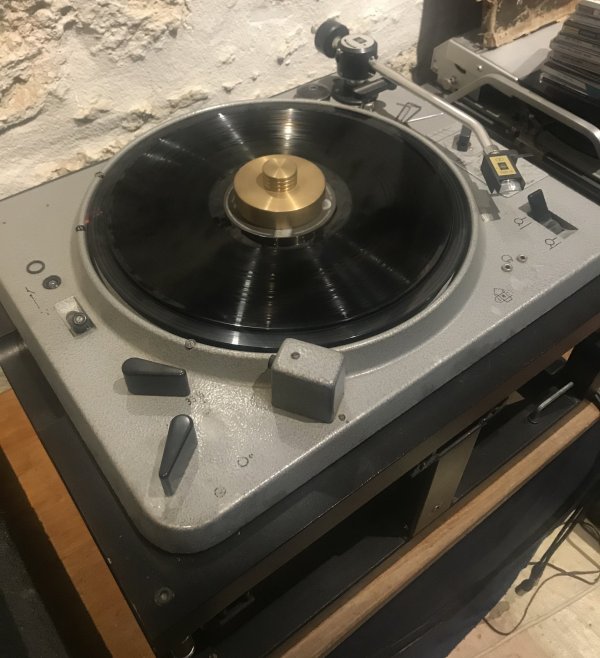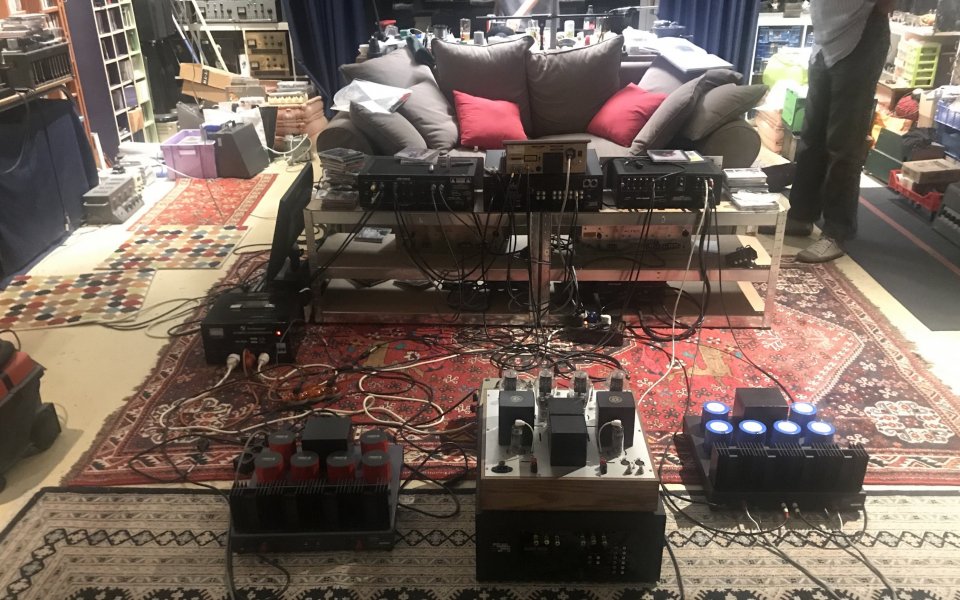obviously that is the first port of call in designing a speaker. Assuming you have done your homework then a reasonable variation (+- 2-3db) is not that hard to do. I think flatter than that is unnecessary and probably you want a bit of a downward slope with increasing frequency anyway. Key is to avoid broad dips or peaks.And what about Freq response ?
Unless you conceive yourself as having " Golden ears " lol , measuring FR is far more accurate then your ears.
Compression drivers / Horn FR graphs ( Vitavox S2 )
- Thread starter andromedaaudio
- Start date
You are using an out of date browser. It may not display this or other websites correctly.
You should upgrade or use an alternative browser.
You should upgrade or use an alternative browser.
Hello RonI think in every loudspeaker design, but, especially, in a two-way design, the crossover point is critical.
Not that I went to loudspeaker design school over the weekend, but I would prefer a 500Hz crossover point over an 800Hz crossover point on the ground that the 800Hz crossover is breaking the midrange frequency range into two big pieces. 500Hz is more in the lower midrange.
If you have two designs that are both done well it would be very challenging to tell where the crossover point is in either design.
Rob
Not sure I agree with you. It is VERY difficult to get good coherence in a multi-way speaker setup and most fail to some degree or another. There are some examples of two or maybe 3-way horns that sound very good and can give the dynamic expression that people go to horns for.
There are some legendary successful examples:
JBL Hartsfield (in 2 or 3 way config)
Vitavox CN191
JBL Paragon (3 way)
Klipschorn and La Scala (3 ways)
Altec VOTT various forms that are 2 ways
Klangfilm Bionors
etc.
We do not need to agree of course.
Those speakers listed of which I have heard I consider to be 'average' ie. either not full range or not particularly dynamic nor particularly resolving and simetimes quite coloured, at least when I heard them...although I have been invited to listen to some modified La Scalas which may help change my mind a little...fingers crossed.
Brad put forward quite a list of 2 and 3 way vintage transducers there , for the sake of clarity might you be prepared to be a little more specific.Those speakers listed of which I have heard I consider to be 'average' ie. either not full range or not particularly dynamic nor particularly resolving and simetimes quite coloured
Ok, if you say so. BTW. I have heard a number of multi-way horn setups and found most of them to be...well...somewhat incoherent, tending to make images overblown and not any more dynamic or transparent than smaller 2 and 3 way systems. A notable exception is the Living Voice Vox Olympian. BTW. have you heard either of the 3-way Aries Cerat speaker systems (Symphonia and the new Aurora)? I challenge you to find more transparent, coherent and dynamic speakers anywhere.We do not need to agree of course.
Those speakers listed of which I have heard I consider to be 'average' ie. either not full range or not particularly dynamic nor particularly resolving and simetimes quite coloured, at least when I heard them...although I have been invited to listen to some modified La Scalas which may help change my mind a little...fingers crossed.
Ok, if you say so. BTW. I have heard a number of multi-way horn setups and found most of them to be...well...somewhat incoherent, tending to make images overblown and not any more dynamic or transparent than smaller 2 and 3 way systems. A notable exception is the Living Voice Vox Olympian. BTW. have you heard either of the 3-way Aries Cerat speaker systems (Symphonia and the new Aurora)? I challenge you to find more transparent, coherent and dynamic speakers anywhere.
Not heard the Aries Cerat speakers...doubt there are any in my part of the world...do have a Kassandra dac though (and love it). Aurora looks a very clever design.
Everyone talks audio speak differently and attribute certain elements of the sound to different descriptions. I have trouble these days listening to high end box speakers of any type as they seem to gloss over things. No doubt rooms have as much to do with this as the loudspeakers and I find much more solace in a high ratio of direct to reflected sound that a horn system can provide.
One of the most important aspects of this is keeping directivity narrow all the way down to the rooms transition to modal acoustics and traditional two or three way loudspeakers seldom achieve this, especially when they are horn speakers and/or have woofer low pass filters above say 150Hz.
Brad put forward quite a list of 2 and 3 way vintage transducers there , for the sake of clarity might you be prepared to be a little more specific.
I'm not trying to devalue any of those loudspeakers, because they can sound very good in my experience. They do all tend to carry the woofer crossover/narrow directivity limitation as mentioned above, and so with some effort could be made to sound 'better'.
Of course some of us will never particularly enjoy narrow directivity loudspeakers, so please do not take my rant as some sort of gospel.
I'm not trying to devalue any of those loudspeakers, because they can sound very good in my experience.
Of course some of us will never particularly enjoy narrow directivity loudspeakers, so please do not take my rant as some sort of gospel.
No worries … For my part I didn’t read it as such , I was merely interested in your experience and personal considerations.
We do not need to agree of course.
Those speakers listed of which I have heard I consider to be 'average' ie. either not full range or not particularly dynamic nor particularly resolving and simetimes quite coloured, at least when I heard them...although I have been invited to listen to some modified La Scalas which may help change my mind a little...fingers crossed.
acg, Could you say which of those speakers you heard and describe the context, so we could better understand your comment? Some of the speakers on that list are pretty tough to hear, particularly the Paragon, the Vitavox, and the Bionor. I would love to hear the Paragon. I own the Vitavox, first/original iteration, and think the Bionors in the context of ddk's system, is the most realistic sound I have experienced. Yes, I agree we all have different priorities and values, but I find the Vitavox and Bionors to be exceedingly dynamic, coherent, and resolving, at least in the system contexts I have heard them.
Paragons still go for 30k+ on the used market. Same drivers as Hartsfield but in a fixed distance cabinet.acg, Could you say which of those speakers you heard and describe the context, so we could better understand your comment? Some of the speakers on that list are pretty tough to hear, particularly the Paragon, the Vitavox, and the Bionor. I would love to hear the Paragon. I own the Vitavox, first/original iteration, and think the Bionors in the context of ddk's system, is the most realistic sound I have experienced. Yes, I agree we all have different priorities and values, but I find the Vitavox and Bionors to be exceedingly dynamic, coherent, and resolving, at least in the system contexts I have heard them.
Paragons still go for 30k+ on the used market. Same drivers as Hartsfield but in a fixed distance cabinet.
I have a friend who has a pair of metronomes and a pair of paragons. They are expensive and I am told the challenge is getting a pair that has not been corrupted through restoration. They are very cool looking.
acg, Could you say which of those speakers you heard and describe the context, so we could better understand your comment? Some of the speakers on that list are pretty tough to hear, particularly the Paragon, the Vitavox, and the Bionor. I would love to hear the Paragon. I own the Vitavox, first/original iteration, and think the Bionors in the context of ddk's system, is the most realistic sound I have experienced. Yes, I agree we all have different priorities and values, but I find the Vitavox and Bionors to be exceedingly dynamic, coherent, and resolving, at least in the system contexts I have heard them.
Not heard the Klangfilm Bionor and would not know where to go to do so. They do look interesting supposedly horn loaded down to 80Hz although I have doubts as to whether that huge baffle is actually horn loading or merely acting as an open baffle/waveguide above say 250Hz.
All the below were heard in other systems (not in my room):
JBL Paragon are lovely with mono recordings of their era but do not do stereo.
Klipschorn and CN191 corner horns for me had definite promise, but were relatively muddled in the bass and upperbass region and signed off early in the bass.
Altec VOTT A7, similar to the corner horns. Darker sound.
As mentioned earlier, I am invited to hear modified La Scala but am yet to do so.
Keep in mind this is me listening in other people rooms. I thought the corner horns had the most promise, but none of them did bass well and I really needed a more uniform and cleaner (less room influence) sound than I heard. My experience is that horns work best when you do not ask too much from them...keep them to operating over a couple of octaves each...control directivity all the way down to your rooms transition to modal acoustic behavior (circa 150Hz - 250Hz) and use as many bass channels as necessary for the room. There are seven octaves between 150Hz and 20kHz and one or two horns will not cover that range without too much compromise (in my opinion), although there have been plenty of innovative attempts to do just this.
JBL Paragon are lovely with mono recordings of their era but do not do stereo.
Hello acg
I have never heard one so I can't comment. I find that really odd?? It was designed to do stereo and using the reflector to broaden the sweet spot. So is the image diffuse and not as sharp as a conventional optimized pair of speakers?? Check out the white paper at the beginning of the page.
Rob
Hello acg
I have never heard one so I can't comment. I find that really odd?? It was designed to do stereo and using the reflector to broaden the sweet spot. So is the image diffuse and not as sharp as a conventional optimized pair of speakers?? Check out the white paper at the beginning of the page.
Rob
Interesting information Rob. Did not know that it was designed initially as a center speaker with Hartfields in support.
But no, the stereo image was not convincing by modern standards.
Interesting information Rob. Did not know that it was designed initially as a center speaker with Hartfields in support.
But no, the stereo image was not convincing by modern standards.
That's food for thought as with your reaction to how good mono sounded if originally designed as a center.
Rob
For the snail horns Admire branded Lamar Model 1s are used.Indeed , off course as you say implementation is key
Does anybody know what brand of compression drivers Admire is using and VIVA ?
These horn designs sounded the best to me last year in Munich .
Furthermore they use Supravox woofers and Beyma drivers for the 'cheaper' models.
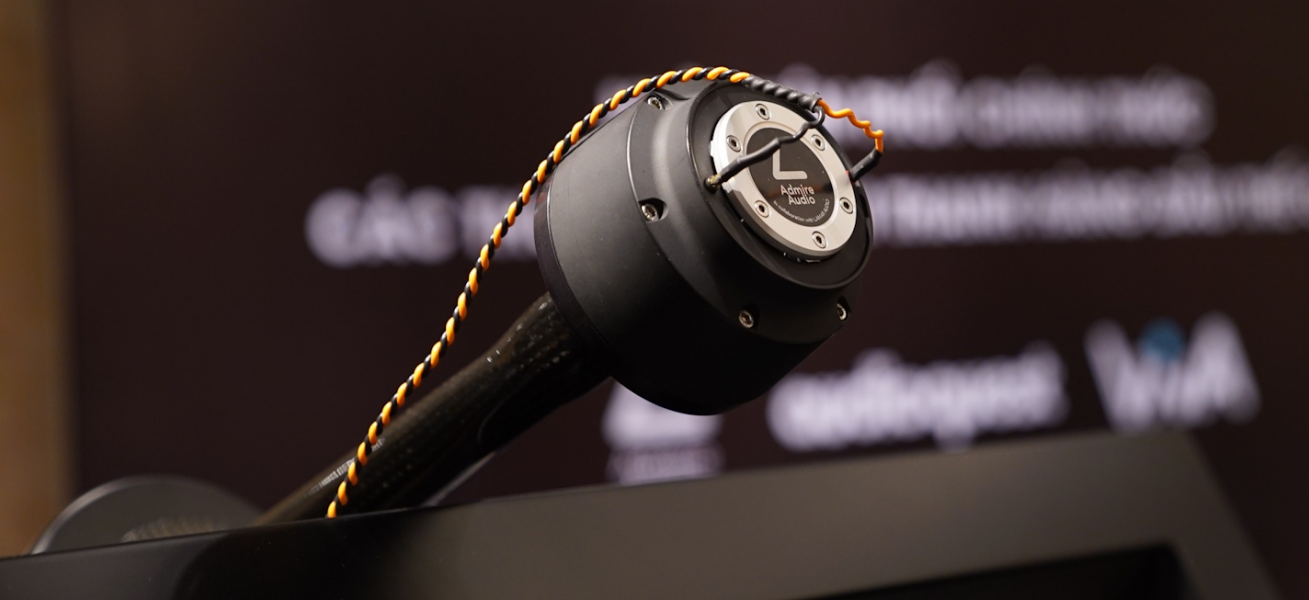
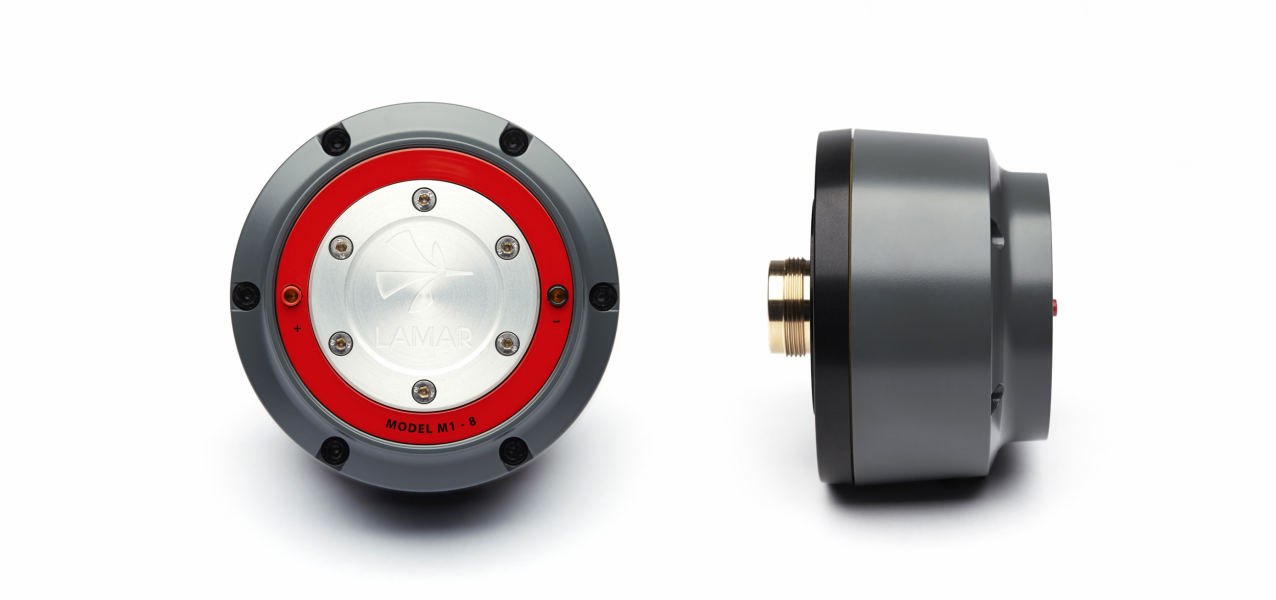
Lamar-Audio Tweeter M8:
Alnico magnet, composite diaphragm, 105 db, minimum cutoff frequency: 3.5khz.
These M8 tweeters have been developed to be associated with large low-mid horns: WE 66, WE 22 A, WE 15 A and Sato.
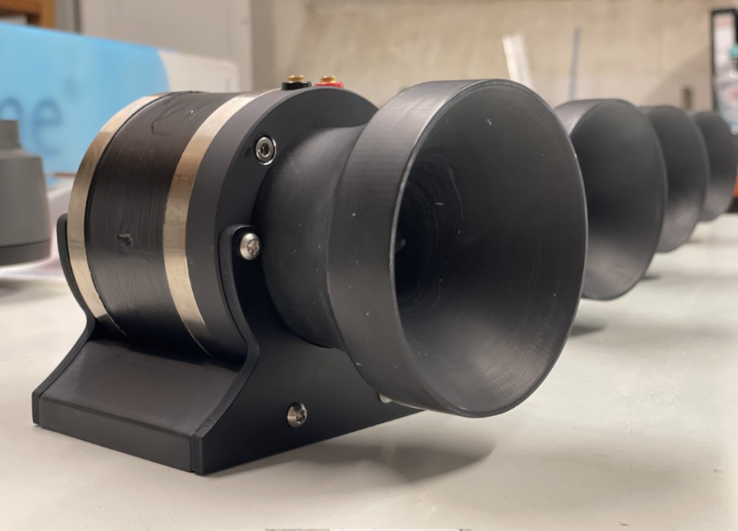
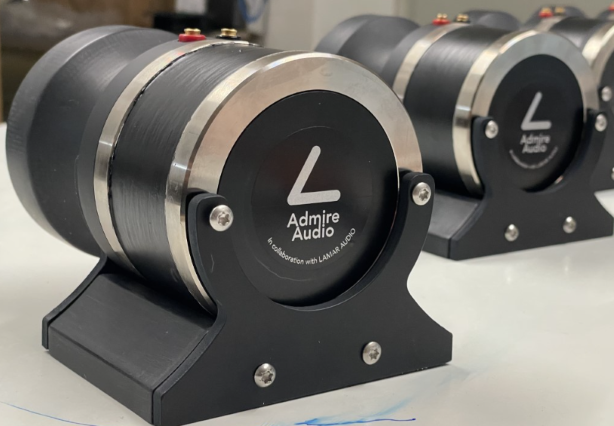
The tweeter is basically a modern variant of the Western Electric 596A/597A Bostwick tweeter.
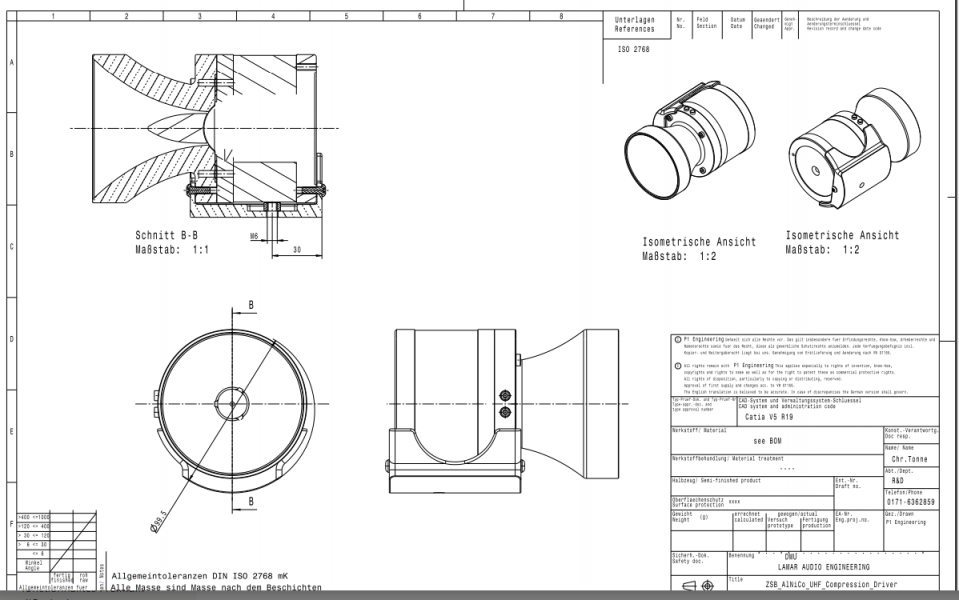
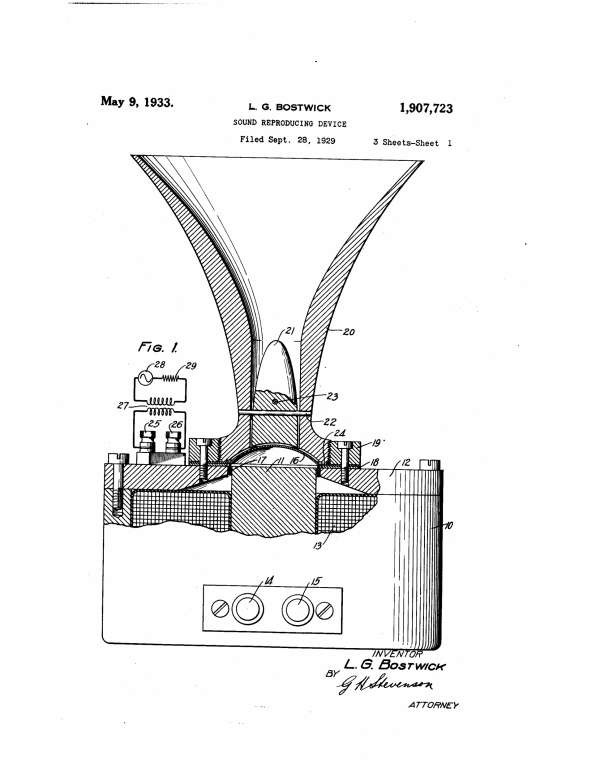
Last edited:
For sato horn you can use yamaha ja 6681 a smooth detailed driver
Thanks for the lamar audio link .
I more or less did all i want to do with cone loudspeakers .
So a horn would be cool , if i would use a compression driver/ horn combo it probably would be LAMAR .
I thought admire had designed the horn but they probably bought it from Lamar as well
The
is really cool
Brg HJ
I more or less did all i want to do with cone loudspeakers .
So a horn would be cool , if i would use a compression driver/ horn combo it probably would be LAMAR .
I thought admire had designed the horn but they probably bought it from Lamar as well
The
HORN WE15A REPLICA
is really cool
Brg HJ
I did 4001 and 2001 in JMLC, then 4003 and 2002 in sameI think if i ever was going to do something with Horns it ll be a 2 way system with either the TAD 4001 or TAD 2002 compression drivers , well made with extremely nice flat FR up to 20 khz
The TD-4001 is of the rear compression design, which eliminates the resonance and phase distortion produced by a surround. It also eliminates cavity resonance interference, achieving very flat frequency response, extremely natural sound and superb definition. A phasing plug helps smooth the response of extra high frequencies.
PRO-HF-UNITS — TAD LABORATORIES
www.technicalaudiodevices.com
now I do 4003 in locally designed CD horn from 600-20K...no breakups
don´t miss any HF or the extra X/O
Two-way is better if you can make the drivers stretch...I did 4001 and 2001 in JMLC, then 4003 and 2002 in same
now I do 4003 in locally designed CD horn from 600-20K...no breakups
don´t miss any HF or the extra X/O
Similar threads
- Replies
- 0
- Views
- 1K
- Replies
- 0
- Views
- 633
- Replies
- 25
- Views
- 6K
- Replies
- 18
- Views
- 3K
| Steve Williams Site Founder | Site Owner | Administrator | Ron Resnick Site Owner | Administrator | Julian (The Fixer) Website Build | Marketing Managersing |







